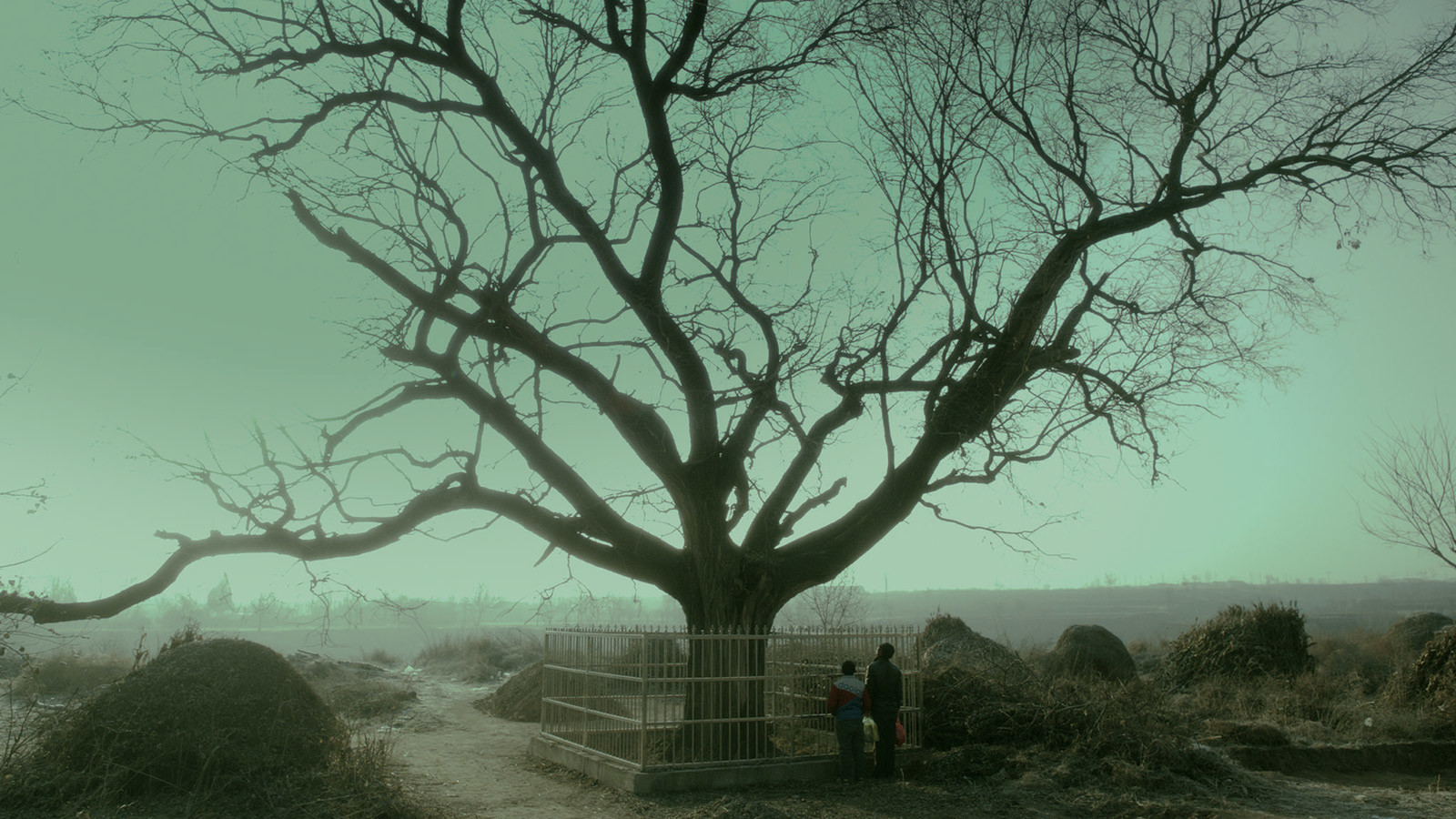By Nicolas Rapold in the May-June 2016 Issue

Hot Property: Life After Life
Root and Branch
As the storybook panoramas of rural China reel past in Zhang Hanyi’s ethereal debut feature, it feels like we’re watching a spiritual X-ray of the countryside. That’s partly because Life After Life is a ghost story in the most literal sense: a mother returns post-death to see her widowed husband and save a cherished tree from destruction. She visits by assuming the body of her preteen son, Leilei, which doesn’t seem to ruffle anyone’s feathers much. The otherworldly effect comes more from the mesmerizing, hovering camerawork by Chang Mang and the moody, enveloping sound design.

From the May-June 2016 Issue
Also in this issue
An early shot sets the lyrical tone in the grove where Leilei runs off, frustrated by his dad’s old-school way of living, only to return speaking in his mother’s voice. The spindly, close-packed trees are a labyrinth of white lines, shot from a hill at a downward angle that loses Leilei and his father in the swirl. The film’s flattened high-def images resemble delicately rendered ink illustrations, even in wide shots of the landscape under China’s ubiquitous industrial reconstruction. It’s as if we’re absorbing something soulful about the setting that (much like Leilei’s mother) refuses to depart entirely despite impending modern upheaval.
Zhang continues the metaphysical magic trick when father and son go round to family members who are living reincarnated in new forms. But that all makes the 80-minute movie (produced by Jia Zhangke) sound more haunted than it is. At its heart are the routine tasks of dealing with impatient relatives, and simply bagging up and moving a tree—the latter a piece of unfinished business that expresses the challenge of staying spiritually grounded amid vast social change.
Sales Agent: Xstream Pictures



